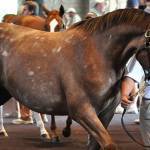Comparing Purchase Price and Earnings in Racing Thoroughbred Horses

Regardless of the system a prospective buyer uses to select the best horse at a yearling sale—tallest, best pedigree, longest tail–there is no guarantee the youngster will ever find the winner’s circle at the racetrack, let alone make the new owner rich. However, a study conducted at the University of Melbourne offers some guidelines that might help yearling buyers at least break even more often.
The researchers looked at the purchase prices and early racing careers of more than 2,700 Thoroughbreds sold as yearlings in Australia in 2003. The horses were split into five groups according to purchase price. The categories were under $10,000; up to $20,000; up to $50,000; up to $100,000; and over $100,000.
Some horses in each category did win enough prize money in their first two years of racing to pay back their original purchase prices as well as training fees which were estimated as $40,000 for the two-year period. However, the percentage of break-even horses in any group was not large. Horses in the two most expensive groups were the most likely to repay an owner’s full investment (5.7% of horses over $100,000; 7% of horses with purchase prices between $50,000 and $100,000).
Looking at horses in each group that earned back their purchase price but not the owner’s full investment including training fees, 24.1% of the least expensive horses (purchased for less than $10,000) accomplished this goal, while 6.3% of the most expensive horses had this type of return. Of the entire group of all horses in the study, only 14.5% won back their purchase price and 5.1% paid back the owner’s full investment within the first two years of racing. Earnings after the horse’s second year at the track were not considered in this study.








